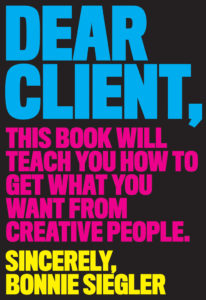 In 1993, a graduate from Carnegie Mellon University (Andy Warhol’s alma mater), co-founded “Number 17”, a graphic design studio based out of the bedroom of her New York apartment. A studio, now known as simply “Eight and a Half”. Today, she is recognized as one of the 50 most influential designers by Graphic Design USA. She has taught at Yale and she lectures at Adobe MAX in Los Angeles. Her team’s work can be found in the design archives of AIGA (American Institute of Graphic Arts). She has been recognized by the Society of Publication Designers, the Webby Awards, and Broadcast Design Association.
In 1993, a graduate from Carnegie Mellon University (Andy Warhol’s alma mater), co-founded “Number 17”, a graphic design studio based out of the bedroom of her New York apartment. A studio, now known as simply “Eight and a Half”. Today, she is recognized as one of the 50 most influential designers by Graphic Design USA. She has taught at Yale and she lectures at Adobe MAX in Los Angeles. Her team’s work can be found in the design archives of AIGA (American Institute of Graphic Arts). She has been recognized by the Society of Publication Designers, the Webby Awards, and Broadcast Design Association.
Her name: Bonnie Siegler. She is an authoritative and experienced design veteran who has worked on projects with clients such as, Oprah Winfrey, Saturday Night Live, Late Night with Jimmy Fallon, 30 Rock, Sex and the City, Chateau Marmont, Conde Nast, and Harper Collins, to name a few.
Siegler is also the author of “Dear Client: This book will teach you how to get what you want from creative people”; a book on Seth Godin’s “Recommended” list.
What is evidently apparent is that in the span of her career as a graphic designer, and as a small business owner, Siegler has come across some egocentric individuals. Therefore, her book, voiced in a straightforward tone, addresses a set of elementary “dos and don’ts” to help clients understand and work better alongside creative individuals. However, the contents of this book are far from reprimanding. “Dear Client” reads as a guide almost, a series of memos intended to foster artistically apt client/designer relationships and to improve communication between the parties, where the end goal is to achieve design nirvana without unnecessary standstills along the journey.
Siegler starts off highlighting the fact that although creative professionals can be sensitive, it also means they work a lot better with positive individuals they trust – a key narrative throughout the book. After all, you may spend weeks, sometimes months, engaging with creative professionals – and trust is crucial. So is a contract, Siegler explains.
At its core, the book wants to help you, the client, hire the right team and ‘have fun’ along the way by advising you to “come prepared”. So, what does this mean?
We all want to elevate our brands, and at a time where companies are struggling to stay relevant let alone be seen, Siegler wants you to do your “homework” in this partnership. This means:
- Getting to know what you like ascetically, and being honest about it – it’ll save you time and money.
- Ask questions. What identifies you?
- Have an idea? Great, talk to the creatives. They will explore it further.
You’re not just a client with cash to flash, you’re a human interacting with other humans, therefore, you probably also want to:
- Take the time to meet designers in person
- Leave fear and insecurity at the door.
- Bring your confidence but not your arrogance.
- Provide feedback, and be a fair judge.
There’s also a section called “Say This, Not That” filled with the classic client appeals. Here are a few obvious favourites:
Don’t say: Make it red.
Do say: I wish it were bolder and stronger.
Don’t say: I hate it.
Do say: Can you explain this to me?
Don’t say: What do you charge for a logo?
Do say: Here is what we are looking for and here’s our ideal timeline. Please come back to us with a proposal.
Lastly, be open to suggestions, and allow the creatives to work their “magic” by keeping in mind Steve Jobs’ famous idiom, “It doesn’t make sense to hire smart people and then tell them what to do; we hire smart people so they can tell us what to do.”
What we learn is that a client/designer relationship is a complex but gratifying one. Visions can be found and lost and found again. It’s everyone’s priority to check in and create projects that flow, projects that make brands look good, and projects that get noticed. But, this doesn’t come naturally and sometimes it must be taught. For someone who has been managing client expectations for over 20 years, Siegler is a pretty reliable teacher.
In truth, a lot of the information in this book is transferable to other areas such as marketing and can be used for SEO, PPC and other media clients. Of course, you’ll need to adjust some of the “lessons” but it still fits the bill.
If you don’t want to come across as “one-of-those-clients”, we recommend giving “Dear Client” a read.





